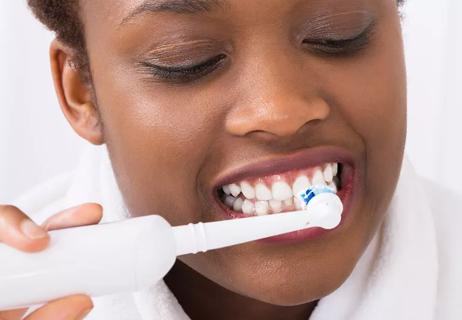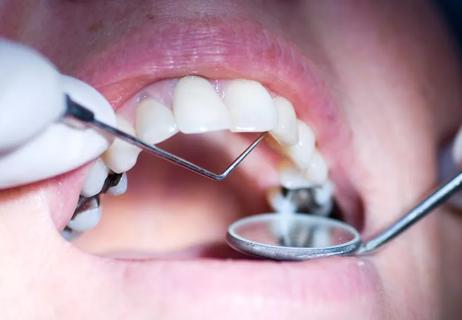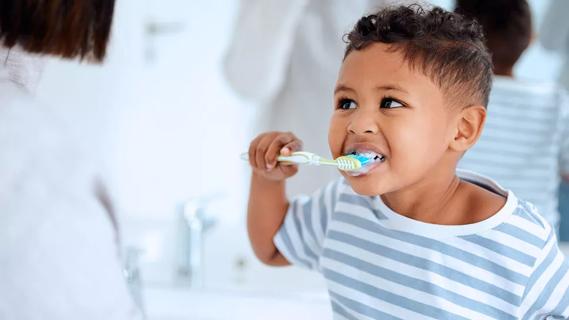The numbness and tingling should wear off in about two hours

Novocaine is a marvel of modern dentistry. It’s hard to imagine undergoing a dental procedure without it. But afterward, the numbness seems to take forever to wear off.
Advertisement
Cleveland Clinic is a non-profit academic medical center. Advertising on our site helps support our mission. We do not endorse non-Cleveland Clinic products or services. Policy
A numb lip or face can make it hard to go back to work or school. And good luck if you want to take a swig of your favorite iced beverage! Chances are you’ll end up wearing most of it.
“Fortunately, these effects are only temporary and usually disappear in about two hours,” says dentist Juliette Clark, DMD.
Novocaine (also called procain) is a local anesthetic that targets a specific area of your body. It causes numbness in that area but doesn’t put you to sleep. Novocaine works by blocking the nerves that carry pain signals to your brain.
Your dentist may give you novocaine for:
Dentists have long used local anesthesia to reduce pain during dental procedures. Early types included nitrous oxide, ether and cocaine. In the early 1900s, novocaine emerged as a more effective option.
Since then, newer drugs have largely replaced novocaine, but the name has stuck. “The word ‘novocaine’ is a generic term for various local anesthetics,” clarifies Dr. Clark.
Here’s another way to think of it: If you cut yourself, you might say “I need a bandaid.” But what you really need is an adhesive bandage or, in British English, a “sticking plaster.” In the U.S., it’s common to use the name of the most popular adhesive bandage brand — BandAid®— to describe all adhesive bandages. Novocaine is the same. Not all local anesthetics that dentists use are actually novocaine, but we use that brand name to describe them.
Advertisement
Dentists have several options for local anesthesia, some of which contain epinephrine (adrenaline) to boost their effectiveness. The most common local anesthetics Dr. Clark uses are:
Local anesthesia is administered by a needle.
Needles not your thing? Let us put your mind at ease: Just before the injection, it’s common for the dentist to spread a topical anesthetic on your gum to numb it. You may still feel a slight pinch or some pressure, but the needles are very thin, so it’s usually easier and less painful than, for example, getting a vaccine.
Dentists use different techniques to deliver anesthesia:
The anesthesia takes effect quickly, usually within:
Depending on the location of the injection, you may lose feeling in your lips, cheek or face. Cue the drooling and half-smile selfies!
As the medication wears off, the numbness may turn into a tingling sensation. These effects should go away completely within two hours, but you may have some lingering soreness around the injection site.
How long local anesthesia lasts depends on the:
“People often ask if there’s anything they can do to make the numbness go away quicker,” says Dr. Clark. “Unfortunately, there isn’t. Because these anesthetics affect a specific area rather than your whole body, you just have to wait for them to leave the tissue.”
Local anesthesia is very safe, but side effects can occur. A review of published articles on the safety of local anesthetics reported a wide range of possible reactions. Some of novocaine’s more common side effects include:
Advertisement
If you look at that list, you’ll quickly notice that a lot of the common side effects of novocaine are also symptoms of anxiety. Especially if you struggle with dental anxiety — there’s a good chance you aren’t reacting to the medication: You’re reacting to being at the dentist.
That said, it’s possible (but rare) to react poorly to novocaine. These reactions vary from mild sensitivity to a more serious allergy or toxicity. Most of the time, any side effects that you experience are mild. They also tend to happen while you’re still in the dentist’s chair. If you feel any symptoms, be sure to let your dentist know right away. They can check you and give you any care you need immediately.
There are multiple different ingredients in most local anesthetics, including epinephrine and preservatives. In the unlikely event that you do have a bad reaction, it may be hard to pinpoint the reason without allergy testing.
The risk of severe side effects from novocaine use is low according to Dr. Clark. That’s partly because local anesthetics are generally safe and well-tolerated, but it’s also because your dentist considers your medical history when they’re choosing an anesthetic for your procedure.
Advertisement
It’s important to let your dentist know if you’ve ever had a bad reaction to local anesthesia. You should also alert them if you are, or may be, pregnant. You don’t need to avoid dental procedures during pregnancy, but it can influence the dentist’s choice of anesthetic. For example, Dr. Clark prefers to use an anesthetic without epinephrine, such as mepivacaine, on patients who are pregnant.
Novocaine is a specific brand of local anesthetic sometimes used during dental procedures. While it’s not usually dentists’ first choice anymore—there are newer, better drugs out there — it’s become a catch-all term to describe a wide range of drugs that have the same effect.
Local anesthesia is a safe and effective tool in dentistry. Though the numbness takes a few hours to wear off, novocaine makes treatment immensely easier for you and your dentist.
Advertisement
Learn more about our editorial process.
Advertisement

It’s all about choosing the right toothbrush and hitting a 45-degree angle

Tricks to finding a toothpaste that really works

Silver fillings are perfectly safe

Help and encourage them to brush and floss regularly, limit sugary foods and get routine dental checkups

Use foot warmers and hand warmers, layer your clothing and avoid sharp shifts in temperature

Benefits typically include bi-annual screenings and lower payments on procedures like fillings and crowns

Dental care is not only safe during pregnancy, but it’s also highly recommended

This tool is an add-on to your regular brushing and flossing habits, not a replacement for them

Type 2 diabetes isn’t inevitable with these dietary changes

Applying a hot or cold compress can help with pain